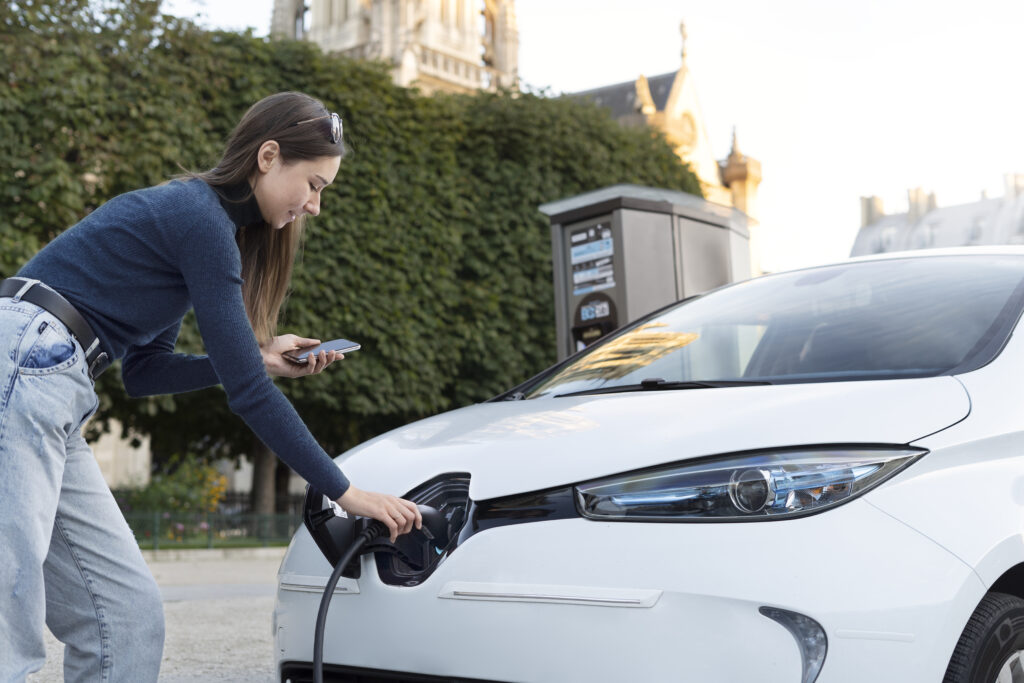Electric vehicles (EVs) are buzzing around the streets, capturing attention with their sleek designs and silent operation. But how do these marvels of modern engineering actually work? Buckle up, because we’re diving under the hood of EVs, exploring the intricate dance of electricity and motion that propels them forward.
The Heart of the Beast: The Electric Motor
Unlike their gasoline-guzzling counterparts, EVs ditch the internal combustion engine in favor of a compact and powerful electric motor. This motor, often an AC induction motor, operates on the principle of electromagnetism. When electricity flows through the motor’s coils, it creates a rotating magnetic field. This field interacts with magnets in the rotor, causing it to spin, and that rotation translates into power for the wheels.
The Powerhouse: The Battery Pack
The electric motor’s fuel isn’t gasoline, but electricity stored in a large battery pack. These packs, typically made of lithium-ion cells, are the lifeblood of an EV, holding the energy that gets converted into motion. The capacity of the battery pack determines the range of the vehicle, similar to how the size of a gas tank dictates how far a car can travel.
The Conductor: The Inverter and Controller
The battery stores DC (direct current) electricity, but the motor thrives on AC (alternating current). This is where the inverter comes in, acting as a translator, converting the DC power from the battery into AC electricity for the motor. Additionally, the controller unit acts as the brain, regulating the flow of electricity to the motor based on the driver’s input through the accelerator pedal. By adjusting the amount of power delivered, the controller controls the speed and torque of the motor.
The Regenerative Braking Advantage
One of the key advantages of EVs is regenerative braking. When you press the brakes, the electric motor switches into reverse mode, acting as a generator. This generates electricity, which is fed back into the battery, recouping some of the energy that would otherwise be lost as heat during friction braking. This not only extends the range of the vehicle but also contributes to energy efficiency.
Charging Up: The Power Grid Connection
To replenish the battery pack, EVs need to be plugged in. This can be done at home using a standard outlet, though it takes longer, or at dedicated charging stations. These stations offer faster charging speeds, often using DC fast chargers that can significantly reduce charging time compared to AC chargers.
Beyond the Basics: Additional Features
Modern EVs come equipped with a range of features that enhance performance and convenience. Thermal management systems ensure optimal battery temperature for efficient operation and longevity. Telematics systems provide real-time information about battery level, charging status, and even remote climate control. Advanced driver-assistance systems (ADAS) further improve safety and driving experience.
The Future of Electric Vehicles
The EV landscape is constantly evolving. Battery technology is improving, offering greater capacity and faster charging times. Range anxiety, a major concern for early adopters, is diminishing as new models boast impressive ranges. Additionally, charging infrastructure is expanding, making it easier than ever to find a place to plug in.
The Takeaway: A Brighter Ride
Electric vehicles are not just futuristic concepts; they are a reality shaping the future of transportation. With their quiet operation, zero tailpipe emissions, and efficient energy usage, EVs offer a compelling alternative to traditional gasoline-powered vehicles. As technology continues to advance and infrastructure expands, EVs are poised to become even more mainstream, offering a cleaner, quieter, and more sustainable ride for everyone.

